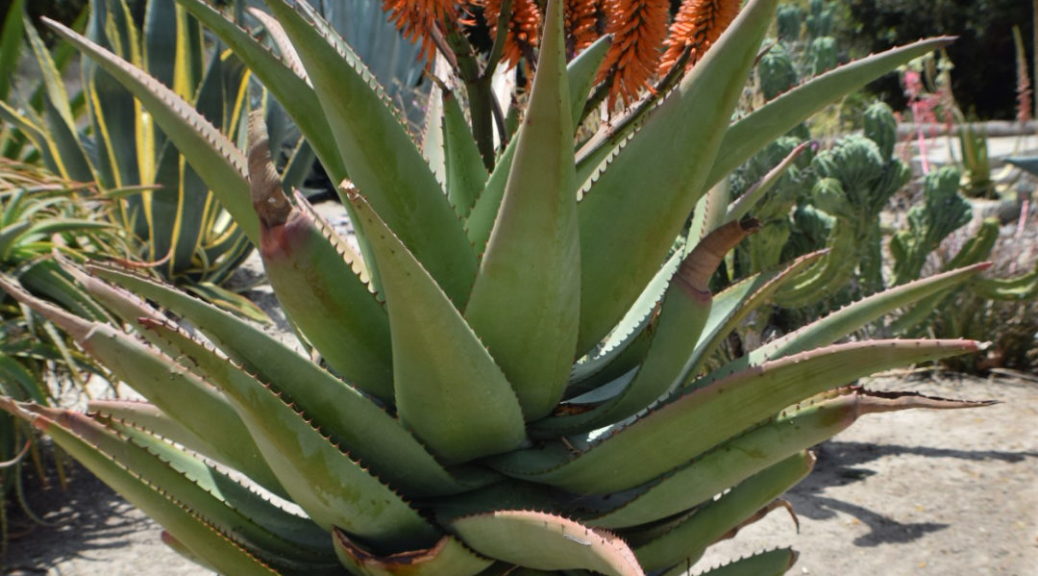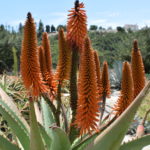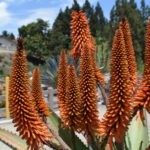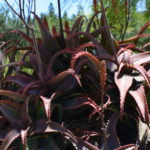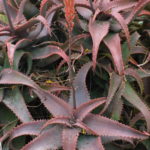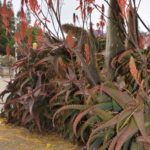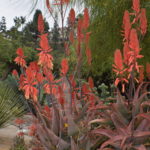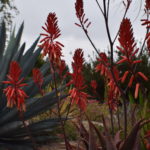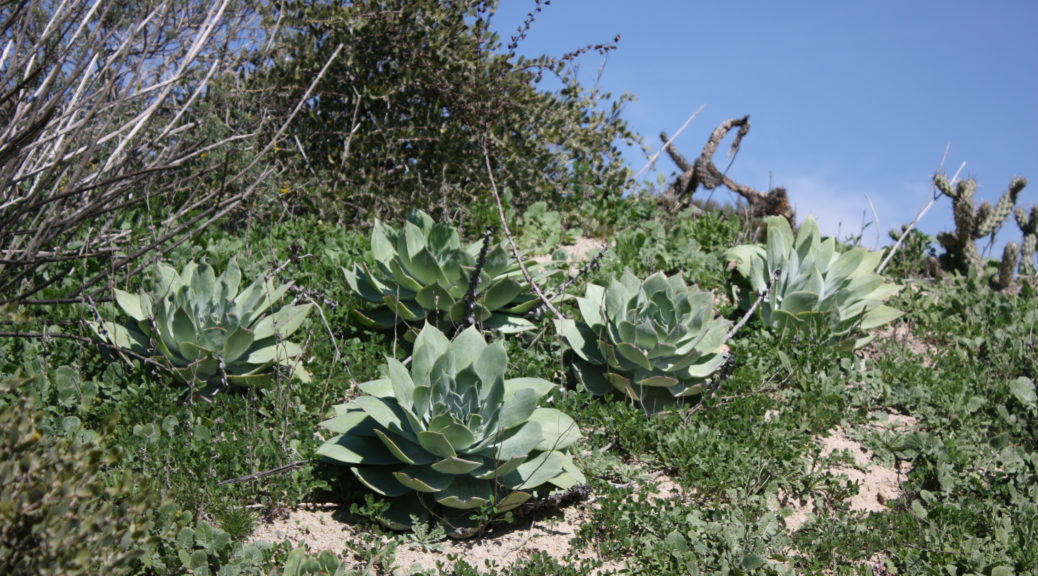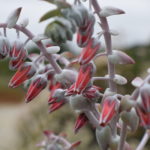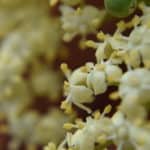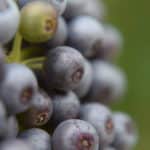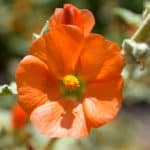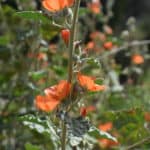This single-stemmed aloe will reach 6 to 9 feet in height; this one at Rice Canyon Demonstration Gardens currently stands at 4 ½ feet, planted when it just stood about 2 foot tall in 2010.
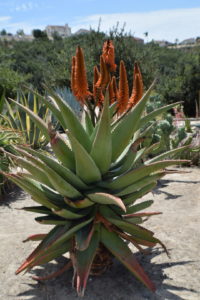
The leaves of the Bitter Aloe are arranged in a rosette and the older leaves remain on the stem after they have dried, forming an “undercoat”. The leaves are a dull green with a reddish tinge. The spines along the leaf margins are reddish-orange to reddish-brown in color.
The large inflorescence is 40 inches tall and has between five and eight branches, each spike is densely flowered, and racemes are cylindrical.
Blooming period occurs between May and August.

